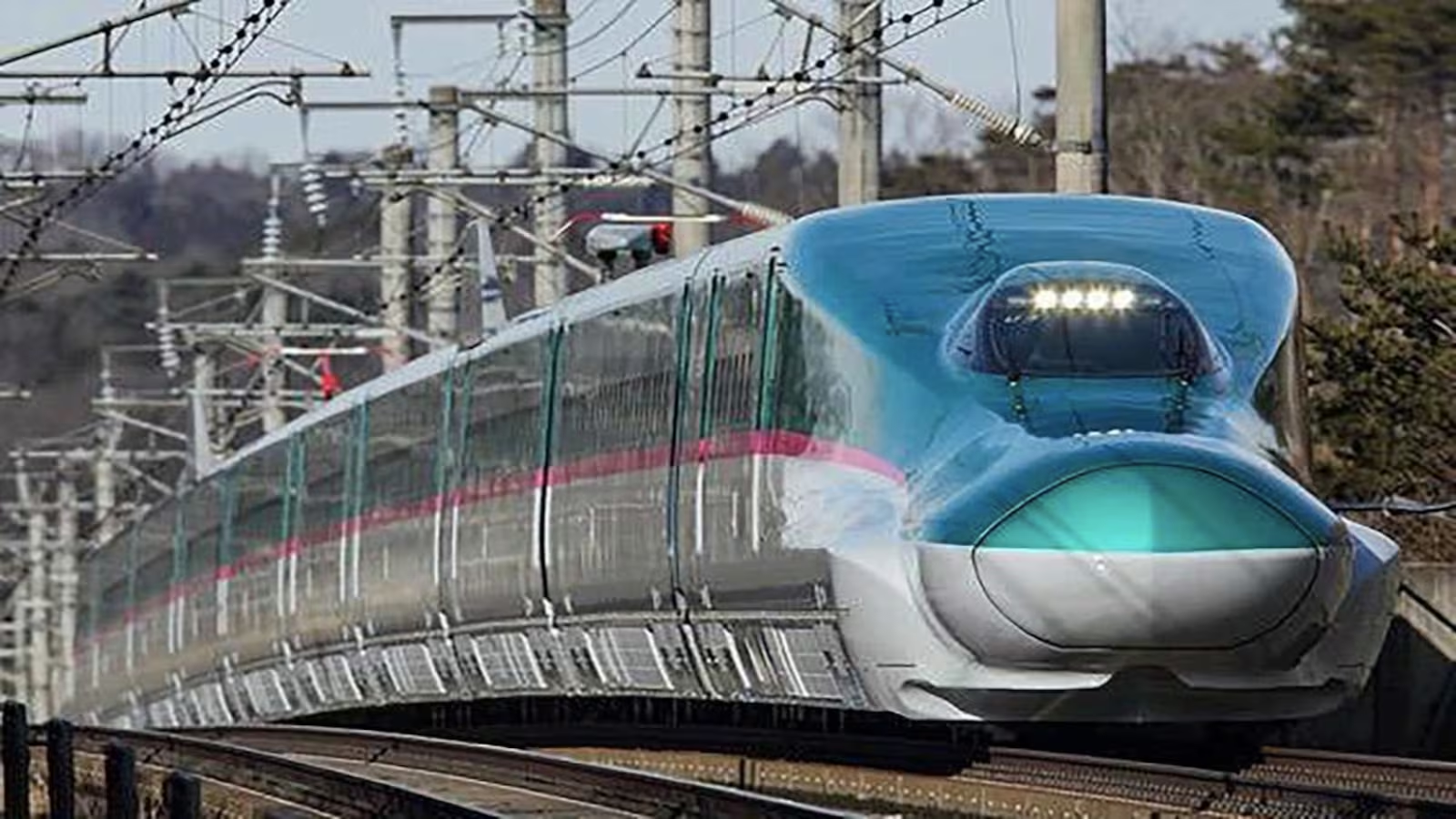India’s first bullet train is no longer a distant dream. With a projected launch in 2026, the Mumbai–Ahmedabad High-Speed Rail (MAHSR) corridor is shaping up to become one of the most transformative infrastructure ventures in the country’s post-independence era.
Symbolising more than just modern transport, the project is a testament to India’s aspirations for cleaner, faster, and more sustainable connectivity, powered by long-standing cooperation with Japan.Launched with great fanfare in September 2017, the project was inaugurated in Ahmedabad by the Prime Ministers of both nations. The high-speed train, using Japan’s Shinkansen technology, aims to cover the 508-km stretch between Ahmedabad and Mumbai in just over two hours, drastically reducing travel time and easing pressure on conventional rail networks. Its estimated top speed of 320 kmph will make it the fastest rail system in India, rivalling road and air travel in both efficiency and comfort.
While the foundation stone laid nearly eight years ago marked a historic step, the project has since faced delays due to land acquisition issues, environmental clearances, and the complexities of cross-national collaboration. However, recent developments suggest a renewed momentum, with construction activities intensifying across both Gujarat and Maharashtra.According to officials from the National High-Speed Rail Corporation Limited (NHSRCL), more than 90% of land acquisition has now been completed, and key infrastructure components like viaducts, bridges, and station structures are under various stages of execution. What makes the initiative truly forward-looking is its emphasis on sustainability. The train will run on electricity, significantly cutting down emissions per passenger compared to car or air travel. Additionally, the project includes plans for solar panels at stations and green corridors to reduce the ecological footprint.
Also Read : https://urbanacres.in/bmc-to-transform-sports-complex-into-heritage-gymkhana/
Equally significant is the technology transfer embedded in the collaboration with Japan. Engineers and railway staff from India are receiving training in Japanese rail operations, fostering skill development and strengthening local capacities. This move aligns with India’s broader goals of becoming a self-reliant and technologically advanced economy.The high-speed rail corridor is more than just a piece of transport infrastructure—it’s a powerful symbol of India’s transition toward smart cities and climate-conscious mobility. By enabling equitable access to rapid transit, the bullet train also promises to narrow the rural-urban divide, unlocking employment opportunities and boosting regional economies.
While a few challenges remain in coordinating between states and executing construction in densely populated zones, the overall trajectory points towards progress. If completed on time, the project will not only redefine India’s public transport landscape but also serve as a blueprint for future high-speed networks nationwide.The bullet train’s journey from blueprint to reality reflects India’s ambition to match pace with global standards while upholding principles of sustainability, efficiency, and international cooperation.
Also Read : https://urbanacres.in/breach-candy-residents-urge-bmc-to-resolve-traffic-with-additional-coastal-road-exit/




